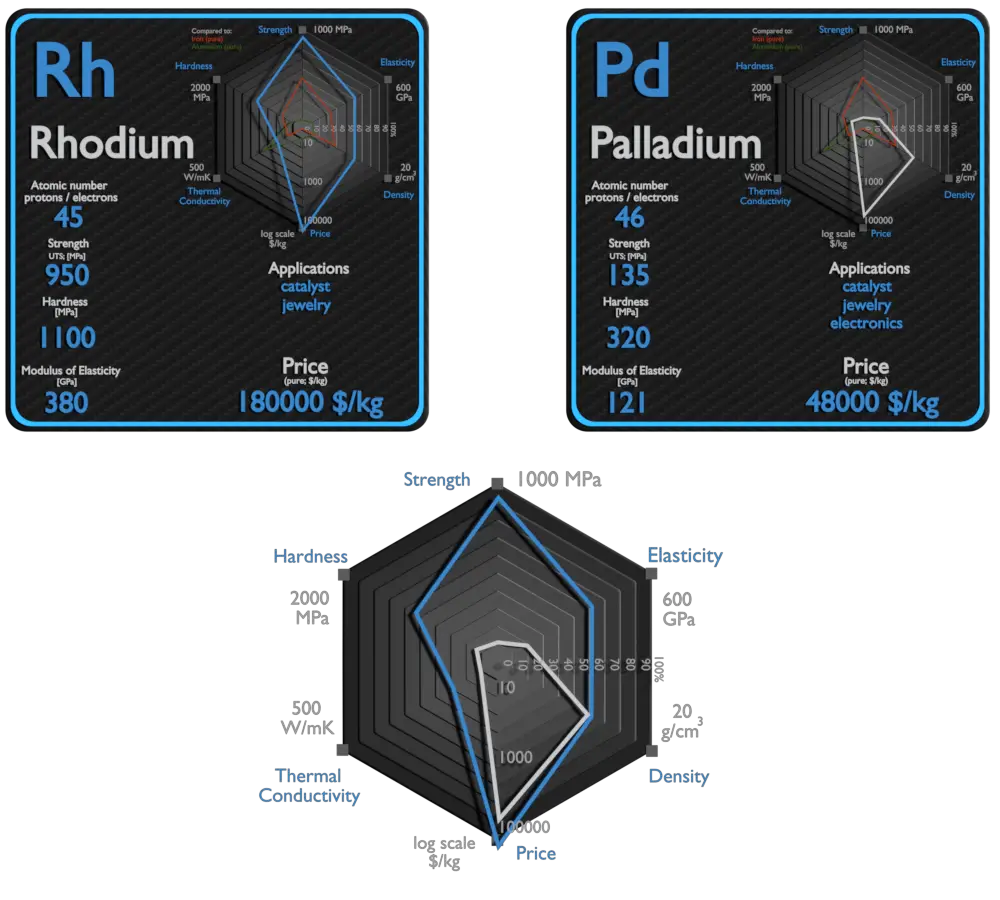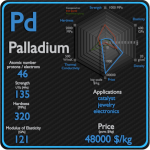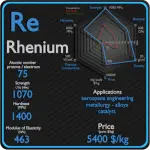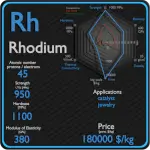This article contains comparison of key thermal and atomic properties of rhodium and palladium, two comparable chemical elements from the periodic table. It also contains basic descriptions and applications of both elements. Rhodium vs Palladium.

Rhodium and Palladium – About Elements


Source: www.luciteria.com
Rhodium and Palladium – Applications
Rhodium
The element’s major use (approximately 80% of world rhodium production) is as one of the catalysts in the three-way catalytic converters in automobiles. Because rhodium metal is inert against corrosion and most aggressive chemicals, and because of its rarity, rhodium is usually alloyed with platinum or palladium and applied in high-temperature and corrosion-resistive coatings. In nuclear reactors, rhodium-based detectors are often used for incore neutron flux measuring.
Palladium
More than half the supply of palladium and its congener platinum is used in catalytic converters, which convert as much as 90% of the harmful gases in automobile exhaust into less noxious substances. Palladium is also used in electronics, dentistry, medicine, hydrogen purification, chemical applications, groundwater treatment, and jewelry. Palladium-based alloys are being extensively used in fuel cell technology applications. The metal is also employed in historic photographic printing process. Palladium has been used as a precious metal in jewelry since 1939 as an alternative to platinum in the alloys called “white gold”.
Rhodium and Palladium – Comparison in Table
| Element | Rhodium | Palladium |
| Density | 12.45 g/cm3 | 12.023 g/cm3 |
| Ultimate Tensile Strength | 950 MPa | 135 MPa |
| Yield Strength | N/A | 30 MPa |
| Young’s Modulus of Elasticity | 380 GPa | 121 GPa |
| Mohs Scale | 6 | 4.8 |
| Brinell Hardness | 1100 MPa | 320 MPa |
| Vickers Hardness | 1246 MPa | 400 MPa |
| Melting Point | 1964 °C | 1554.9 °C |
| Boiling Point | 3695 °C | 2963 °C |
| Thermal Conductivity | 150 W/mK | 72 W/mK |
| Thermal Expansion Coefficient | 8.2 µm/mK | 11.8 µm/mK |
| Specific Heat | 0.242 J/g K | 0.24 J/g K |
| Heat of Fusion | 21.5 kJ/mol | 17.6 kJ/mol |
| Heat of Vaporization | 493 kJ/mol | 357 kJ/mol |






